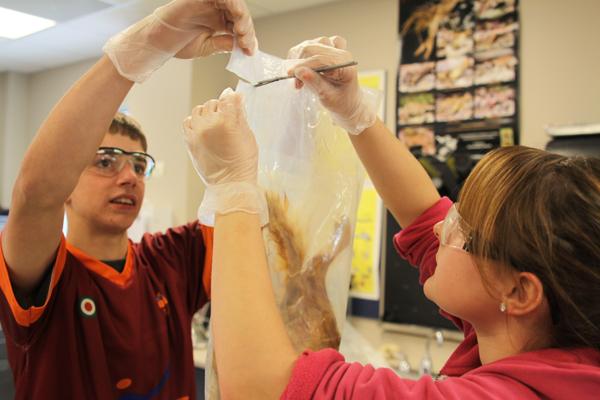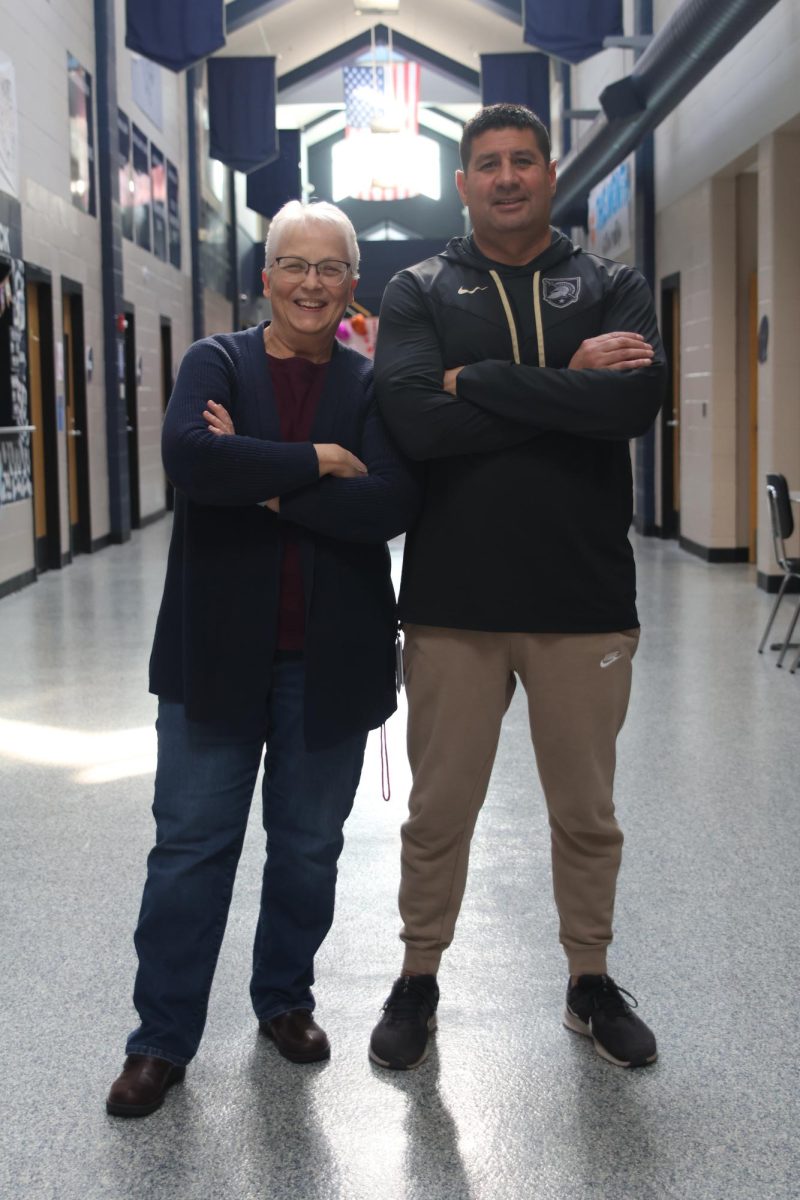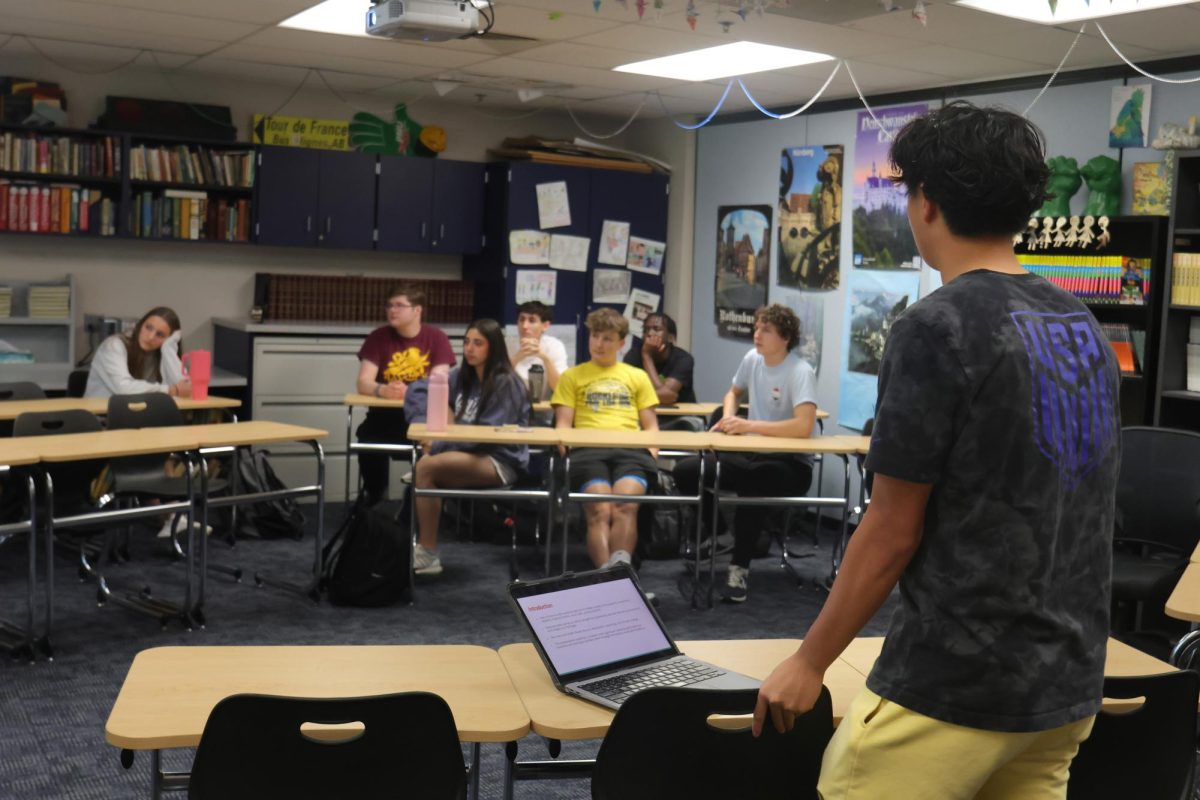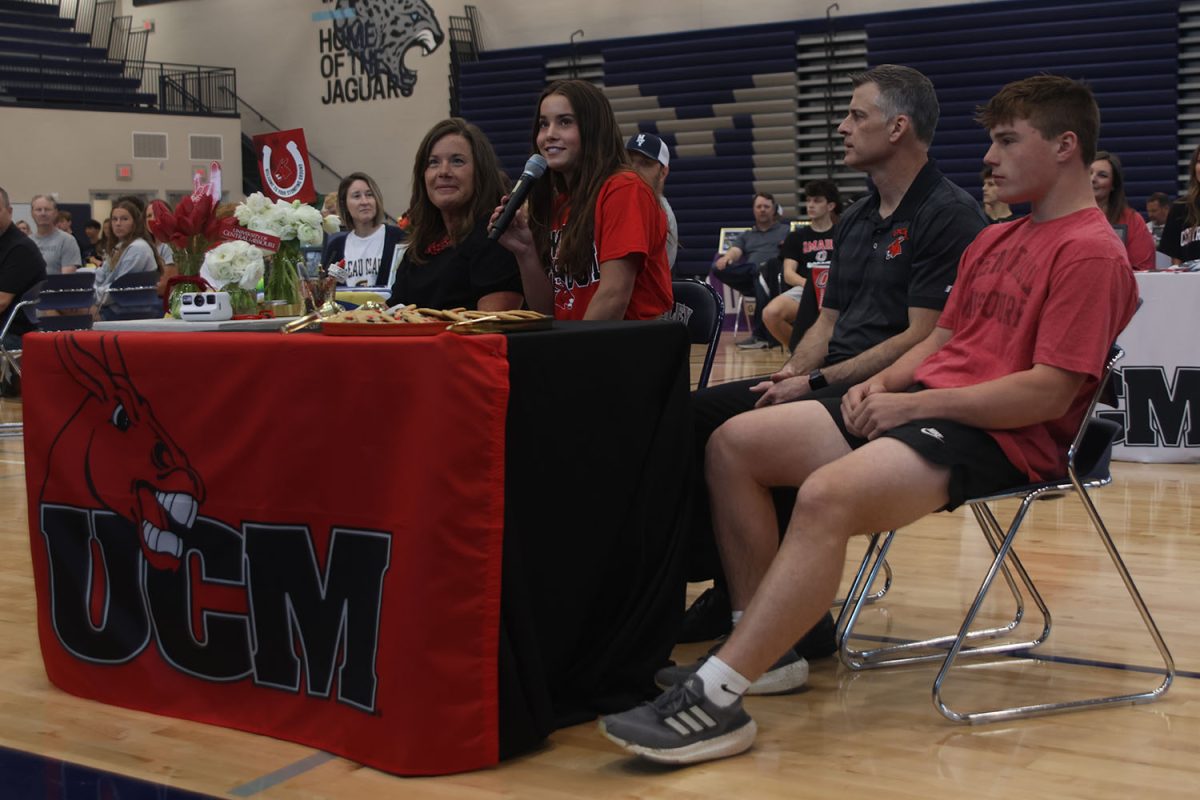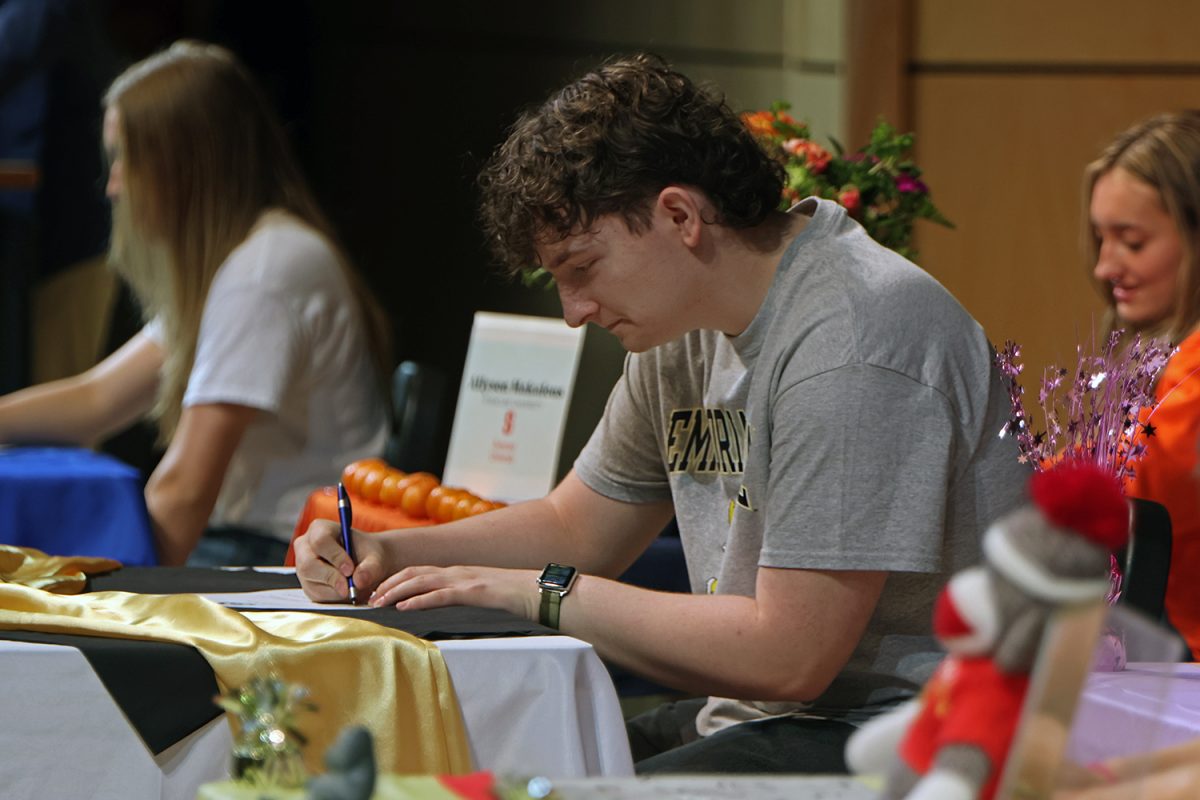With the smell of preservatives wafting around the classroom, students gather around the back table in science teacher Eric Thomas’ classroom to observe the proper techniques for dissecting a cat.
In the Silver 4 Honors Human Anatomy and Physiology class of 16 students ranging from sophomores to seniors, everyone seems surprisingly nonchalant at the task they were about to perform.
“I guess we’re just usually sitting and listening,” junior Rachel Blair said. “Now we’re actually getting our hands dirty.”
The cat dissection began on Wednesday, March 29. The students dissect every class period for four to five weeks until the end of the school year. During these class periods, the students will be able to fully dissect a preserved cat. The dissection begins with the cat’s digestive system and will finish with a lobotomy of the brain.
“Certainly you get an opportunity to see what you’ve learned by dissecting. They get to practice dissection skills if they do decide to pursue biology further. It’s also good practical knowledge for their life,” Thomas said. “They see how their own anatomy works.”
Some students in Honors Human Anatomy and Physiology found it beneficial to take Zoology prior to Anatomy as it prepared them for the cat dissection. Thomas states that students are dissecting specimens in Zoology for about 25 class periods out of the school year, ranging from sponges to fetal pigs.
“Zoology helped me a lot,” senior Kristyn Harding said. “You dissect, like, every class period.”
Another task in the dissection process is figuring out a name for the cat. Coming up with a creative name is actually part of the final grade. Seniors Megan Hightower and Brittany Zarda debated names while dissecting their cat.
“We’ve got a tough kitty,” senior Megan Hightower said. “Maybe Cathy, like Chatty Cathy. Or Jeanette, or maybe Queen Elizabeth.”
Thomas states that people don’t faint during cat dissections very often. The previous seven months of studying and learning about human anatomy has prepared them for this final project.
“I try to keep in mind that this is better because it’s for research,” senior Leah Rettig said.



